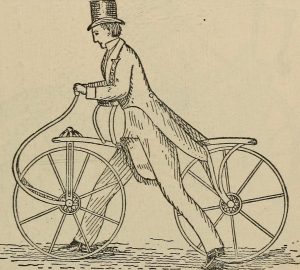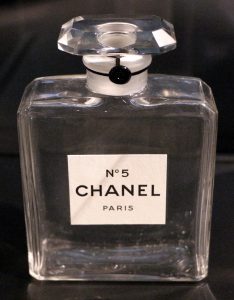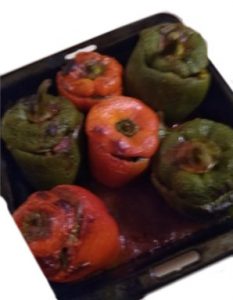Diane’s Newsletter 21st May 2019
Although any day of the year is repeated, both backwards and forwards, no day can be exactly the same as the corresponding day in the past (or the future), which is probably something for which we should be thankful.
 It is recorded that King Henry VI died in the Tower of London on the 21st May in 1471. He was most likely executed on the orders of the man who immediately afterwards was crowned Edward IV, and although Henry may have had very little left to live for – he had lost his throne, his only son, and his mind – I doubt that he would have been happy to add execution to his list of woes.
It is recorded that King Henry VI died in the Tower of London on the 21st May in 1471. He was most likely executed on the orders of the man who immediately afterwards was crowned Edward IV, and although Henry may have had very little left to live for – he had lost his throne, his only son, and his mind – I doubt that he would have been happy to add execution to his list of woes.
On the same May day in 1819, 348 years later, people were astounded by the sight of bicycles, or ‘swift walkers’, in New York City. Denis Johnson, an English coachmaker, had invented Britain’s first bicycle in 1818. An improvement on an earlier German invention, it collected many names, among them: Pedestrian’s Accelerator, Swift Walker, and Dandy Horse.

 In 1927, the 25-year-old Charles Lindbergh reached Paris in his plane Spirit of St. Louis and, in doing so, completed the very first solo non-stop Atlantic flight (New York to Paris). Co-incidentally, on the same day – 21st May – five years later, Amelia Earhart landed in a pasture in Northern Ireland and became the first woman to fly solo across the Atlantic (Newfoundland to Derry).
In 1927, the 25-year-old Charles Lindbergh reached Paris in his plane Spirit of St. Louis and, in doing so, completed the very first solo non-stop Atlantic flight (New York to Paris). Co-incidentally, on the same day – 21st May – five years later, Amelia Earhart landed in a pasture in Northern Ireland and became the first woman to fly solo across the Atlantic (Newfoundland to Derry).
 On a slightly different note, Laszlo Toth (Hungarian born, Australian citizen) vandalised the Pietà statue in Rome on the 21st May 1972. Mentally unstable, Toth believed himself to be the Christ, and he attacked the statue with a hammer while shouting ‘I am Jesus Christ – risen from the dead.’ He spent two years in an Italian psychiatric hospital before being extradited to Australia where he died in 2012.
On a slightly different note, Laszlo Toth (Hungarian born, Australian citizen) vandalised the Pietà statue in Rome on the 21st May 1972. Mentally unstable, Toth believed himself to be the Christ, and he attacked the statue with a hammer while shouting ‘I am Jesus Christ – risen from the dead.’ He spent two years in an Italian psychiatric hospital before being extradited to Australia where he died in 2012.
In 1991, on the 21st May, the former Indian prime minister Rajiv Gandhi was assassinated by a female suicide bomber, and, on the 21st May 2011, the Grímsvötn Volcano on Iceland began to erupt after seven years of silence. The plumes reached 12 km into the air, and there were many earthquakes. The eruption continued for four days and played havoc with air traffic above Iceland, Norway, Greenland, Ireland, the United Kingdom, and Germany.

All images from wikipedia
On the subject of the to-be-or-not-to-be of diaries, I received an interesting, and moving, comment from Linda Leong. Some of you may already have read it in the comments section for the previous Newsletter; however, in case you may have missed it, here it is:
On the subject of diaries, I had my aunt request before her death, for her diaries, of which she had a considerable number, to be destroyed. She also requested to be cremated. Thus upon her death I gathered her diaries, some of which had plastic or leather covers, or were spiral bound. The covers and metal spirals I removed and I did this in my bedroom, placing each as I finished into a box. The box I would later take to the funeral home so the diaries could be placed into my aunts coffin ahead of the funeral. A day or so after my aunt’s funeral, I found a small diary that had slipped down between the head of my bed and the mattress. Curiosity got the better of me and I read it. I loved reading the personal accounts of her daily thoughts and feelings, and I believe it was her little gift to me. Something I will treasure, as she knew me to be a bookworm, enjoying the lives of the characters in a book. She was a spinster with no children of her own, and I loved her like my mother. I think of her almost everyday, as her photo hangs on the wall in front of my work desk.
So perhaps it is important that diaries can avoid the incinerator or the shredding machine, and that they are allowed to speak to new generations. For people who thought they knew the diary writer and for those who, eventually, will only recognize the name as an entry on a family tree, diaries, like biographies and autobiographies, may actually be important.
As I mentioned in the April Newsletter, I began to think about diaries (and what to do with them) when I discovered a couple of old diaries mixed up with a pile of papers. One of them, a beautifully bound book given to me by my grandmother when I left Australia for Europe, is actually completely filled, and follows my thoughts and experiences from a very hot summer Sydney to an extremely cold and grey late winter British Isles. The diary finishes in Ireland on the 20th February. Opening the diary randomly (and, believe me or not, it was randomly), I came across the following:

(It is the end of January several decades ago, and my girlfriend and I are in London)
… We left the Overseas Visitors’ Club for our new flat at Knightsbridge. It was really a lovely area – mainly flats (big, old, and English-looking). Our room has a delightful view of flats and a small green park crowded out with stark, grey trees. The room itself has floral carpet (maroon, blue, and bone). There are heavy maroon curtains and bedspreads, walnut furniture (wardrobe, dressing table, cupboard), three chairs, and a heater. Between the beds there is a table with a pink lamp. It is gorgeous. We were met at the door by Pepper and Miss Dean (the poodle and the housekeeper). The owner of the ‘house’ (or flat) – Flat 34, Floor 4, Thurloe Court – works as a make-up supervisor for a film company. We discovered that for GBP5 a week we get the room, heating, breakfast, baths, the use of the kitchen, and all existing food…
A small glimpse into a time and a place that probably no longer exists.
The image (not the same house) is from Harrods Estates.
May is, of course, the fifth month of the year. In numerology, 5 is associated with freedom, new things, versatility, change, enthusiasm, and adventure. A person with 5 as his or her birthday, expression, motivation, or life path number will usually be talented, independent, and will resent an environment that is dull or too static. Colours associated with 5 are all the blue-green colours.
We have five senses, five fingers on each hand, and five toes on each foot. We even have five appendages (if we count the head as an appendage). There are five elements in the universe: earth, water, fire, air, and ether. Most flowers have five petals, and most starfish have five ‘legs’. The Olympic symbol consists of five rings.
 In the Christian religion, we have the five wounds of Christ, while Islam talks about the five pillars of wisdom and muslims pray to Allah five times a day. The god Shiva has five faces, and the Torah consists of five books. In Sikhism, there are five sacred Sikh symbols: steel bracelet, unshorn hair, comb, sword, and soldier’s shorts. There are also five deadly evils: attachment, anger, greed, lust, and ego.
In the Christian religion, we have the five wounds of Christ, while Islam talks about the five pillars of wisdom and muslims pray to Allah five times a day. The god Shiva has five faces, and the Torah consists of five books. In Sikhism, there are five sacred Sikh symbols: steel bracelet, unshorn hair, comb, sword, and soldier’s shorts. There are also five deadly evils: attachment, anger, greed, lust, and ego.
In East Asian tradition, the five elements are wood, fire, metal, water and earth. In Cantonese, the word for ‘five’ sounds like ‘not’, and when 5 appears before a number that is considered lucky (for example, 8), it negates the luck.
Most cars with manual transmission have five gears. British security is referred to by the term MI5. There are five sides and angles in a pentagon. No. 5 is the name of a well-known Chanel perfume, and some people believe that 5 is associated with love and marriage (perhaps that explains the name of the perfume?).

In literature, the following are some examples of books with five in the title:
Slaughterhouse Five by Kurt Vonnegut
The Famous Five by Enid Blyton
The Five People You Meet in Heaven by Mitch Albom
Five Quarters of the Orange by Joanne Harris
The Fifth Elephant by Terry Pratchett
Five Red Herrings by Dorothy L. Sayers
(Images from wikipedia/wikimedia)
100g caster sugar
200g butter
300g plain flour – keep aside 3-4 tsp to use later
½ tsp baking powder
few drops of vanilla essence
1 egg white (beaten)
Swedish pearl/nib sugar* (if available) or white sugar/chopped nuts/cinnamon
Cream the butter and sugar until light and fluffy, add vanilla essence. Sift flour and baking powder, add to creamed mixture. Work lightly to mix together to form a large ball (add a little more flour if necessary), sprinkle work surface with a little flour and shape the dough into four rolls (approx. 4 cm in diameter).
Wrap the rolls in cling film, place on a board and into refrigerator until firm enough to slice (30-40 mins). Preheat oven to 190º. Slice rolls into 1cm widths, put on tray lined with baking paper, brush with beaten egg white and sprinkle biscuits with pearl sugar. Alternatively use caster sugar or chopped nuts/cinnamon – or other spice combination if preferred.
Bake approx. 10-12 mins. on centre shelf of oven. Check towards end of cooking as they can darken quite quickly. Biscuits should be pale golden. Remove from oven, leave on tray for a few minutes, then loosen and leave a few minutes longer. Transfer to a rack till cool completely, then store in an airtight container.
The rolls can also be stored in the refrigerator for 3-4 days and baked later.
* Pearl sugar is available from Nordic Fusion shops in Sydney – $8.00/500g, and the image of pearl sugar above is from Nordic Fusion
You will need:
100g rice (½ cup)
¾ cup water (for boiling the rice)
8 medium capsicums (any colour)
1 x 400g tin diced tomatoes
1/4 cup baby spinach (or fresh parsley)
15-20 Kalamata olives – chopped
oil for frying
2 shallots, chopped
2 garlic cloves, finely chopped
1 tin lentils
3 teaspoons cumin
1 teaspoon coriander
1/2 teaspoon black pepper – freshly ground (if possible)
3/4 teaspoon turmeric
1 teaspoon vegetable salt (Herbamare) or ordinary salt
SAUCE
I used a small jar (200g) Salsa mild sauce, to which I added 1 tblspn oil and approximately 1 dl water, but you can make your own sauce:
4 tablespoons olive oil
1 peeled and chopped tomato
1 tablespoon tomato paste
½ cup water
salt & pepper
 Set the oven to 180° C.
Set the oven to 180° C.
1. Cook the rice and place to one side.
2. Wash the capsicums. Remove the tops and place to one side. Remove the core and the seeds. Place the capsicums in a baking tray.
3. Lightly fry the shallots and garlic.
4. Mix the rice and the shallot/garlic mixture with all the other ingredients.
5. Spoon the mixture into the capsicums (do not overfill), and put the tops back in place.
6. Mix all the ingredients for the sauce and pour the sauce over and around the capsicums.
7. Bake for 40-50 minutes (or until the capsicums are cooked and the skins begin to blister).
8. Serve with a green salad, yoghurt, and some fresh bread.